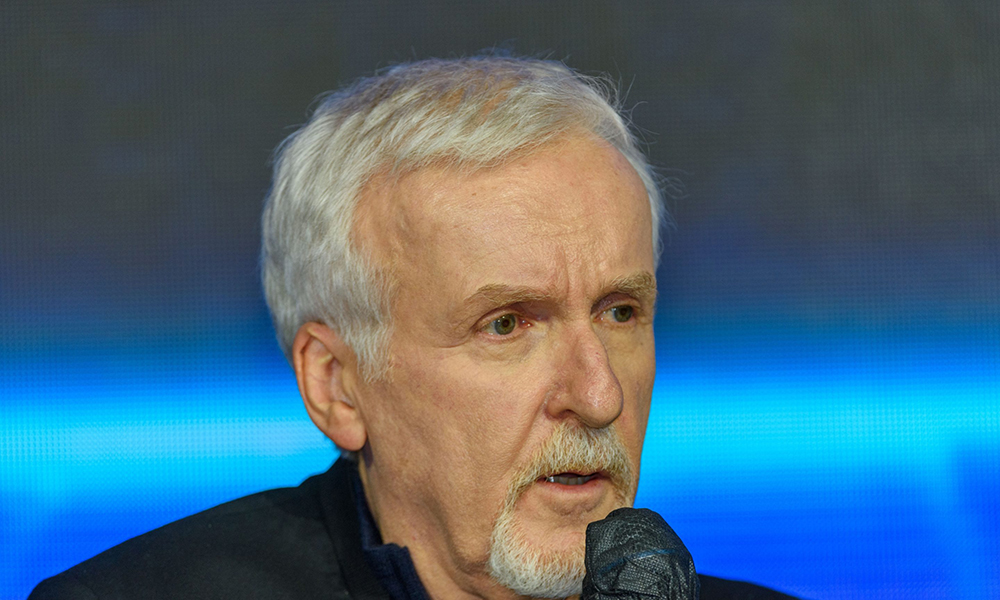
电影导演及深海探险家詹姆斯·卡梅隆表示,“泰坦号”(Titan)潜水艇的致命内爆应该会促使政府制定针对载客深海潜水艇的法规,就像一个世纪前“泰坦尼克号”(Titanic)灾难推动出台海上安全新法规一样。
卡梅隆执导过一部关于沉船的大片,曾经33次潜入沉船地点。7月18日,他对渥太华的记者说,法规应该针对观光艇,而不是科学考察或单人行动用艇。他强调道,深海探索界在半个世纪以来一直保持着零事故的纪录。
他说:“在此之前,深海探索活动从未出现过灾难、事故、死亡和内爆事件。这是一个极其异常的数据点,但在某种程度上也印证了那条规律,即我们在半个世纪里一直很安全。”
发表上述言论时,卡梅隆正站在一艘24英尺(约7.32米)高、石灰绿色的实验性潜水艇面前,他曾经在2012年驾驶该潜水艇抵达海洋的最深处。这艘名为“深海挑战者号”(Deepsea Challenger)的潜水艇此刻正摆在于渥太华举办的加拿大皇家地理学会(Royal Canadian Geographical Society)夏季展览上——该展览名为“重压之下:詹姆斯·卡梅隆挑战深渊”(Pressure: James Cameron into the Abyss)。
卡梅隆表示,“泰坦尼克号”灾难促成了一则国际安全公约的建立,其至今仍然管理着商用船舶活动,即规定他们要配备足够的救生艇以及规划出避开冰山等危险因素的航线。
这位加拿大导演称,由于许多潜水艇航行所在的国际水域并非受到单一政府或管理部门的控制,这将难以确定由谁来领导制定新法规。也许每个拥有潜水艇的国家都将不得不实施自己的规则。
之前的批评声
卡梅隆曾经批评OceanGate公司及其首席执行官斯托克顿·拉什——他也是今年6月“泰坦号”内爆的遇难者之一——无视专家的呼吁,没有聘请第三方海上安全机构来认证其潜水艇。拉什认为这样做会阻碍创新,因此不以为意。
卡梅隆自己的“深海挑战者号”也并未获得认证,但他是独自一人登上狭窄的船舱的。他还谴责OceanGate公司使用碳纤维船体,称应该选用钢、钛、陶瓷或丙烯酸等材料制造耐压船体。
卡梅隆和一支澳大利亚团队花了七年的时间才设计出这艘2.6万磅(约11.79吨)重的圆柱形潜水艇,该潜水艇由一种称为复合泡沫的材料制成,可以承受巨大的水下压力。
卡梅隆说:“在那七年的时间里,我非常担心会留下内爆风险和其他隐患。因此,我们反复地测试,不断模拟各种情境。”
卡梅隆曾经在一个大型冰柜里进行了10至12个小时的模拟潜水,期间他的团队会“给他制造事故”,比如模拟发生火灾或电池故障。他表示,经过模拟后,他终于能够满怀信心地进入潜水艇。
7月18日,卡梅隆的导师加拿大海洋探索者及医生乔·麦金尼斯和卡梅隆一同出席展览,凸显了这位电影导演在深海探索界的深厚渊源。1968年,14岁的卡梅隆给麦金尼斯写了一封关于潜水艇的信,自此两人便结下了不解之缘。
卡梅隆对传奇潜水艇驾驶员保罗-亨利·纳尔若莱在今年6月的“泰坦号”内爆事故中丧生表示哀悼。卡梅隆表示,他们两人还发起过一场友谊赛,看谁潜水的次数更多。
他说:“这在情感上是一个巨大的冲击,就像一记重拳。事情完全出乎预料,因为没有人想到会发生内爆,毕竟大家花费全部的时间,进行一次次有限元分析、计算机模拟以及做出的其他努力就是为了防止这类事故的发生。”(财富中文网)
译者:中慧言-刘嘉欢
电影导演及深海探险家詹姆斯·卡梅隆表示,“泰坦号”(Titan)潜水艇的致命内爆应该会促使政府制定针对载客深海潜水艇的法规,就像一个世纪前“泰坦尼克号”(Titanic)灾难推动出台海上安全新法规一样。
卡梅隆执导过一部关于沉船的大片,曾经33次潜入沉船地点。7月18日,他对渥太华的记者说,法规应该针对观光艇,而不是科学考察或单人行动用艇。他强调道,深海探索界在半个世纪以来一直保持着零事故的纪录。
他说:“在此之前,深海探索活动从未出现过灾难、事故、死亡和内爆事件。这是一个极其异常的数据点,但在某种程度上也印证了那条规律,即我们在半个世纪里一直很安全。”
发表上述言论时,卡梅隆正站在一艘24英尺(约7.32米)高、石灰绿色的实验性潜水艇面前,他曾经在2012年驾驶该潜水艇抵达海洋的最深处。这艘名为“深海挑战者号”(Deepsea Challenger)的潜水艇此刻正摆在于渥太华举办的加拿大皇家地理学会(Royal Canadian Geographical Society)夏季展览上——该展览名为“重压之下:詹姆斯·卡梅隆挑战深渊”(Pressure: James Cameron into the Abyss)。
卡梅隆表示,“泰坦尼克号”灾难促成了一则国际安全公约的建立,其至今仍然管理着商用船舶活动,即规定他们要配备足够的救生艇以及规划出避开冰山等危险因素的航线。
这位加拿大导演称,由于许多潜水艇航行所在的国际水域并非受到单一政府或管理部门的控制,这将难以确定由谁来领导制定新法规。也许每个拥有潜水艇的国家都将不得不实施自己的规则。
之前的批评声
卡梅隆曾经批评OceanGate公司及其首席执行官斯托克顿·拉什——他也是今年6月“泰坦号”内爆的遇难者之一——无视专家的呼吁,没有聘请第三方海上安全机构来认证其潜水艇。拉什认为这样做会阻碍创新,因此不以为意。
卡梅隆自己的“深海挑战者号”也并未获得认证,但他是独自一人登上狭窄的船舱的。他还谴责OceanGate公司使用碳纤维船体,称应该选用钢、钛、陶瓷或丙烯酸等材料制造耐压船体。
卡梅隆和一支澳大利亚团队花了七年的时间才设计出这艘2.6万磅(约11.79吨)重的圆柱形潜水艇,该潜水艇由一种称为复合泡沫的材料制成,可以承受巨大的水下压力。
卡梅隆说:“在那七年的时间里,我非常担心会留下内爆风险和其他隐患。因此,我们反复地测试,不断模拟各种情境。”
卡梅隆曾经在一个大型冰柜里进行了10至12个小时的模拟潜水,期间他的团队会“给他制造事故”,比如模拟发生火灾或电池故障。他表示,经过模拟后,他终于能够满怀信心地进入潜水艇。
7月18日,卡梅隆的导师加拿大海洋探索者及医生乔·麦金尼斯和卡梅隆一同出席展览,凸显了这位电影导演在深海探索界的深厚渊源。1968年,14岁的卡梅隆给麦金尼斯写了一封关于潜水艇的信,自此两人便结下了不解之缘。
卡梅隆对传奇潜水艇驾驶员保罗-亨利·纳尔若莱在今年6月的“泰坦号”内爆事故中丧生表示哀悼。卡梅隆表示,他们两人还发起过一场友谊赛,看谁潜水的次数更多。
他说:“这在情感上是一个巨大的冲击,就像一记重拳。事情完全出乎预料,因为没有人想到会发生内爆,毕竟大家花费全部的时间,进行一次次有限元分析、计算机模拟以及做出的其他努力就是为了防止这类事故的发生。”(财富中文网)
译者:中慧言-刘嘉欢
Film director and deep-sea explorer James Cameron said the fatal implosion of the Titan submersible should prompt regulations for vessels carrying passengers to the ocean’s depths, just as the Titanic disaster spurred new maritime-safety rules a century ago.
Cameron, who directed a blockbuster about the shipwreck and has traveled to the site 33 times, told reporters in Ottawa on July 18 that rules should be targeted toward tourist craft, not scientific or solo missions. He stressed that the deep-ocean exploration community has a half-century record of perfect safety.
“No fatalities, no incidents, no deaths, no implosions until today,” he said. “This is an extreme outlier of a data point that, in a sense, proves the rule. And the rule is we’ve been safe for half a century.”
Cameron made the comments while standing in front of a 24-foot, lime-green experimental submersible that he piloted to the deepest part of the ocean in 2012. The vessel, the Deepsea Challenger, is in Ottawa for the Royal Canadian Geographical Society’s summer exhibition, titled “Pressure: James Cameron into the Abyss.”
The Titanic disaster led to the establishment of an international safety convention that still governs merchant ships today, requiring them to have adequate lifeboats and map out voyages to avoid hazards such as icebergs, Cameron said.
The Canadian director said it’s challenging to determine who should lead new regulations because no single government or authority controls the international waters where many submersible voyages take place. Potentially, every government where submersibles operate would have to pass their own rules.
Previous Criticism
Cameron had criticized OceanGate and its chief executive, Stockton Rush — who was among those killed when the Titan imploded in June — for ignoring experts’ calls to have a third-party maritime safety organization certify the vessel. Rush had brushed off the process as impeding innovation.
The director’s own Deepsea Challenger also wasn’t certified, but Cameron was alone in the cramped chamber. He has also panned OceanGate’s use of a carbon-fiber hull, saying that pressure hulls should be made of materials like steel, titanium, ceramic or acrylic.
He and an Australian team spent seven years designing the 26,000-pound, cylindrical submersible made of a specialized substance, called syntactic foam, that’s capable of withstanding intense underwater pressure.
“I was pretty concerned about implosion risk and other hazards over a seven-year period,” Cameron said. “We did test after test after test and scenario after scenario.”
Cameron performed 10- to 12-hour simulated dives inside a large freezer, where his team would “throw failures at him,” such as mock fires and battery disasters. After all that, he entered the vessel with great confidence, he said.
Cameron was joined on July 18 by his mentor, Canadian ocean explorer and physician Joe MacInnis, underscoring the film director’s longtime roots in the deep-sea exploration community. A lifelong friendship between the two formed when 14-year-old Cameron wrote to MacInnis about submersibles in 1968.
The director lamented the loss of legendary submersible pilot Paul-Henri Nargeolet in the Titan implosion last month. The pair had a friendly competition to see who had dived the most, Cameron said.
“It’s an emotional shock. It’s like a gut punch,” he said. “You don’t expect it because you don’t expect an implosion to happen, because that’s what you spend all your time and all your finite-element analysis and your computer simulations and everything else to prevent.”






